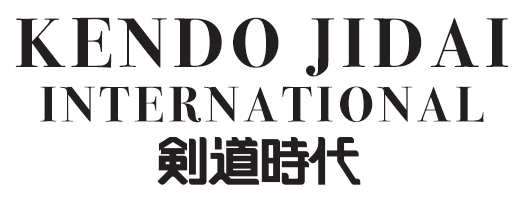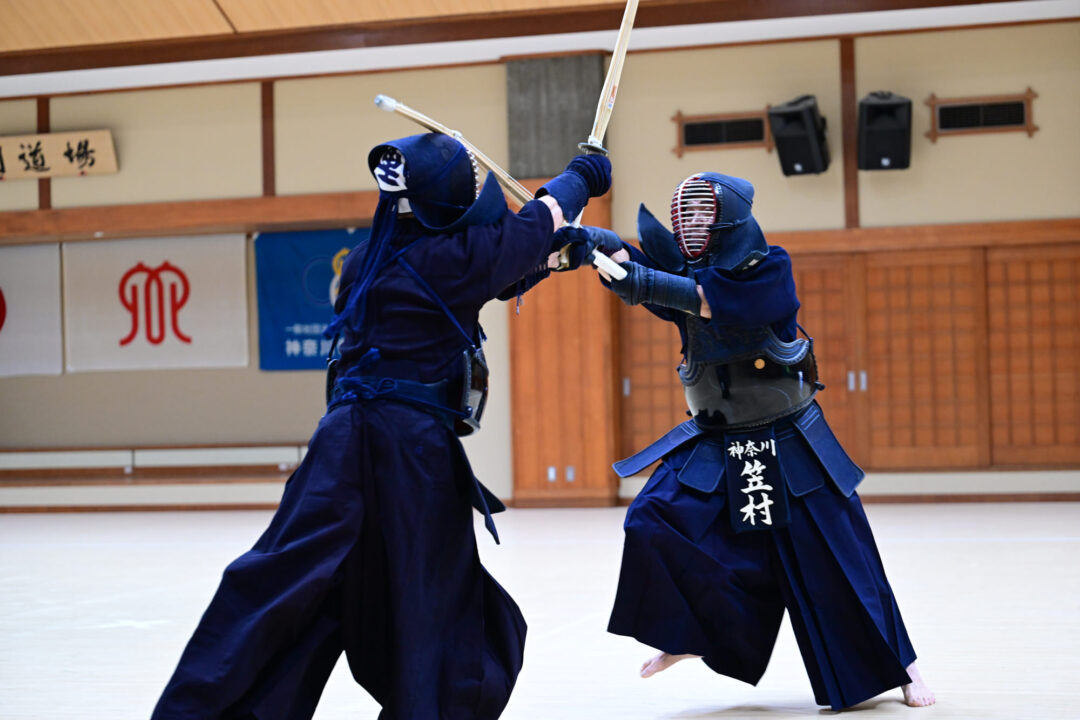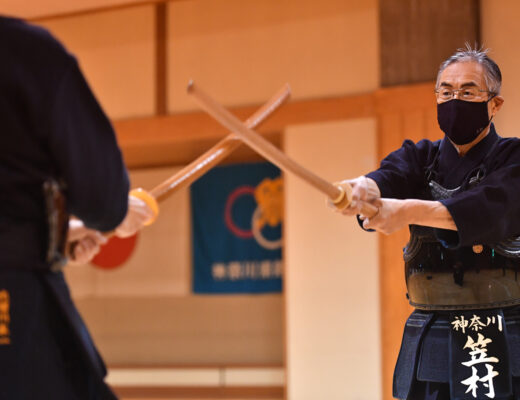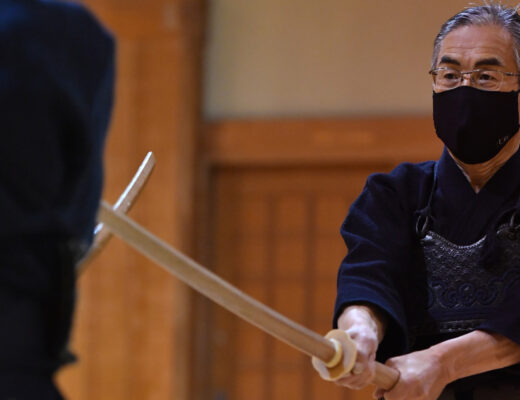2025.11 KENDOJIDAI
Composition: Tsuchiya Tomohiro
Photography: Nishiguchi Kunihiko
*Unauthorized reproduction or use of any images in this article is strictly prohibited.
Drawing on his many years of Kendo training, Kasamura Koji Sensei shared his invaluable insights, principles that could be called golden rules for practice. He emphasizes that Kendo, a traditional Japanese culture built by the masters of the past, is not merely about acquiring technique. It is a lifelong path of self-cultivation, where inheriting and faithfully passing on the spirit of those who came before is of utmost importance.
Kasamura Koji, Hanshi
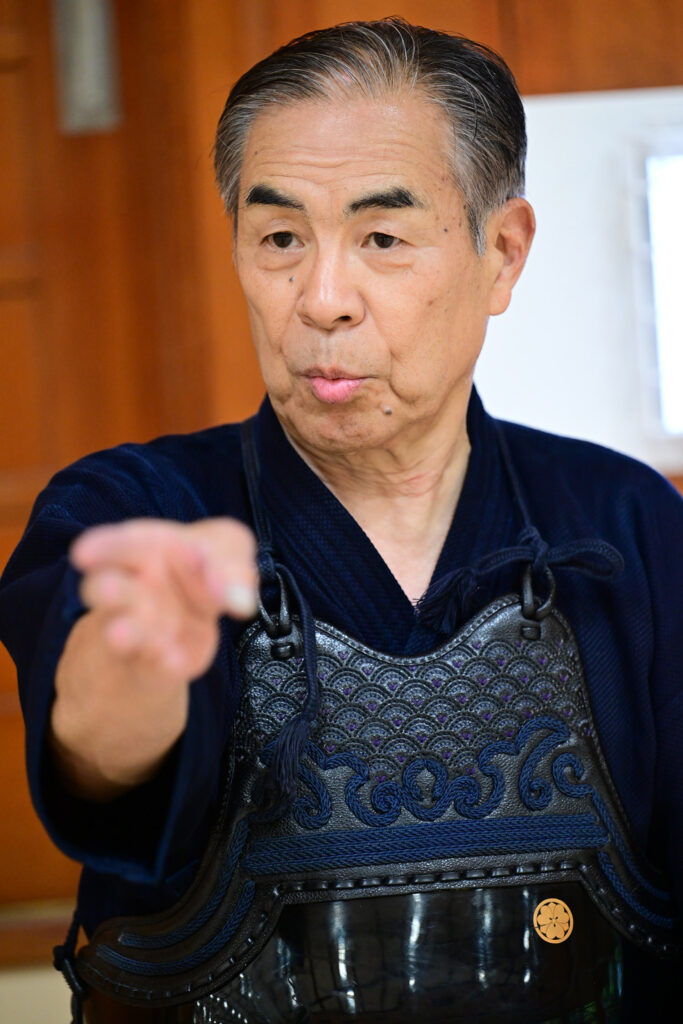
Pursuing Kendo as a Traditional Culture
As one who continues to train in the way of Kendo, I would like to share the lessons I have received from my predecessors and teachers, along with the understandings I have developed through my own practice.
First of all, Kendo has a profound history and cultural foundation. We must have the mindset to inherit it correctly and pass it on to the next generation. Kendo is a traditional Japanese culture built through the devotion and even the lives of our predecessors, and has been handed down to the present day. Each person who aspires to Kendo should keep in mind what “tradition” truly means, ensuring that its spirit is never lost and is faithfully passed on to those who follow.
To preserve and carry on this tradition, it is essential to approach Kendo with a proactive attitude and a genuine desire to learn. Kendo should not be viewed merely as the acquisition of technical skill, but as a means of cultivating one’s character. This, I believe, is what distinguishes Budo from other forms of sport.
In particular, Kendo is a lifelong pursuit. Instructors should not only teach technical skills but also guide their students to develop mental strength, spirit, and mindset, fostering an attitude of learning and dedication that leads to personal growth. According to the All Japan Kendo Federation, “The concept of Kendo is to discipline the human character through the application of the principles of the katana (sword).” This statement perfectly captures the true essence of Kendo.
During my time as a Tokuren member, I trained relentlessly in pursuit of victory. Now, however, I place greater importance on self-discipline and on strengthening my mental fortitude and state of mind. I feel that approaching daily practice with this mindset is the key to fulfilling a meaningful lifelong journey in Kendo. Striving for correct Kendo requires cultivating both technical skill and spirit, never neglecting the training of the heart.
Courtesy, Respect, and the Bonds Between Companions
Kendo is often said to “begin and end with courtesy.” It is essential to cultivate an attitude that values proper etiquette and shows respect toward others. Politeness and respect are qualities that hold even greater importance than technical skill. Therefore, teachers must pay particular attention to teaching these values to beginners, guiding them carefully and setting an example through their own behavior.
The Dojo is a place of training and discipline. From the bow upon entering to the bow upon leaving, everyone, including observers, should remain mindful of their conduct. Young practitioners and lower-ranked students, in particular, carefully watch every movement and attitude of their instructors and senior members. Observing proper etiquette and valuing courtesy is not only a reflection of self-discipline but also an expression of respect toward one’s opponent.
Although Kendo is an individual discipline, communication, cooperation, and mutual support among practitioners are indispensable. By sweating together in the Dojo, pushing one another, and striving to improve side by side, strong bonds of friendship and trust naturally form. These connections become a great source of strength for continuing the practice of Kendo.
Kendo techniques are most often passed directly from teacher to student. When learning basic and applied techniques, it is vital that instructors first demonstrate proper movements and then help students internalize them through repeated practice. This process forms the very foundation of Kendo. Therefore, instructors must guide beginners with care and always strive to set an example through their own behavior.
The famous saying by Yamamoto Isoroku expresses this perfectly: “Show them how to do it, tell them what to do, let them try, and praise them, otherwise people will not be moved to act.”
The basics of Kendo are like the foundation of a building. Even the most magnificent temple or shrine cannot stand firmly without a strong base. In the same way, solid groundwork must be laid first, and only then can instruction suited to each student’s level of training be given to help them acquire proper technique.
Persevering in Kendo through the Words of the Masters
The rest of this article is only available for Kendo Jidai International subscribers!
